This is the fourth in my series about the best Australian drama films (see here). As I explained earlier, the term ‘contemporary drama films’ is used to distinguish these films from ‘period drama films’. My definition of contemporary drama films is based largely on what they are not: they are NOT period drama films, NOR are they principally comedies, action films, crime-dramas or horror films. They are simply drama films set roughly in the same period that they are made.
So, this page is about Australian drama films both made in the 2000s and set in, or close to, the 2000s. This genre has been very popular in Australia in the 2000s, and hundreds of contemporary drama films have been made since 2000 (film production has boomed in this period and over 1,000 Australian films have been released this century). So it’s been especially difficult to narrow the list down to the top 60 (see below for my methodology).
The best of the new dramas were made by new directors who made their first films in the 2000s and who took a fresh look at contemporary Australian society. They covered a wide range of topics and reflect both the diversity of Australian society, as well as our growing awareness of the situation, or rather diversity of situations, of our indigenous people.
So let’s examine what Australian stories in the 2000s the best of our film-makers chose to tell about the current era.
1. Look Both Ways (2005) (Sarah Watt)

Two disaffected individuals meet in Adelaide – Meryl, a struggling artist who witnesses a tragic accident while returning from her father’s funeral, meets Nick, a photographer on the local newspaper covering the tragedy, who has just had his own bad news. Around them, other relationships struggle and their friends deal with life’s challenges and with the boredom of the everyday. This is a thoughtful, remarkable film about life and death and love and loneliness. Breathtakingly beautiful, ugly, sad and hilarious, this sweet film delves deep within the human situation, describing the interaction of several characters over one hot Adelaide weekend. Sarah Watts had a remarkable eye for beauty and an understanding of human frailty and strength. The film uses collage and animated watercolours to illustrate thoughts and emotions, and the soundtrack is also hauntingly effective. This was Watt’s first feature film and is a low-key triumph. One theme is how we deal with death, the deaths of loved ones, and of our own impending deaths. But there are many other themes: how to cope with the boredom and frustrations of life, how to trust in relationships, how to find and give love. There is a fine ensemble cast, with Justine Clarke in her finest role (sorry Play School fans), and William McInnes, Anthony Hayes, Lisa Flanagan, Daniella Farinacci and of course the wonderful Sacha Horler, providing great support. The film won the 2005 AFI award for best film and Sarah Watts also won the best director award. (See here for more information)
2. Lantana (2001)
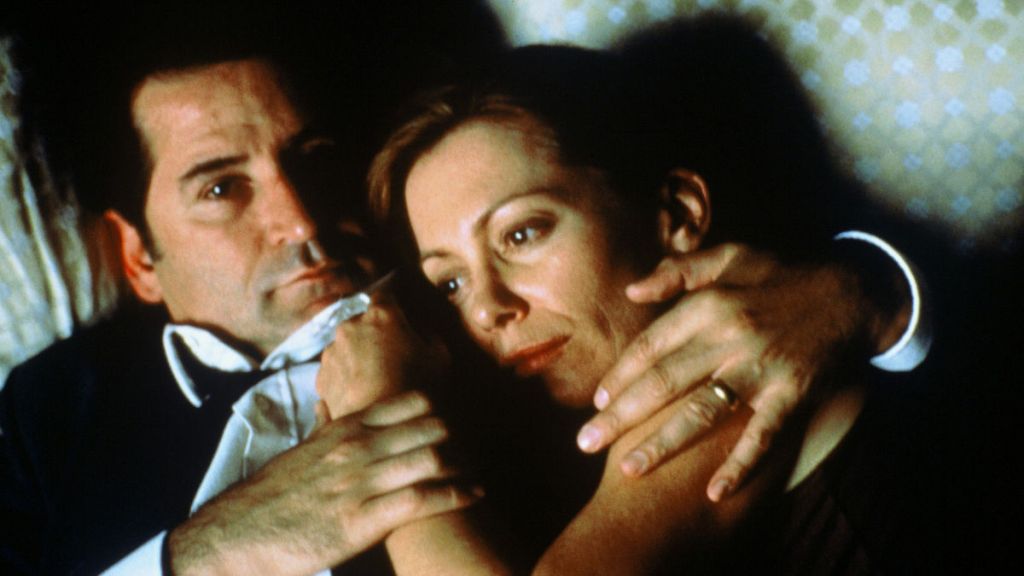
A woman’s disappearance one night in northern Sydney bushland sparks suspicion among four couples and uncovers hidden secrets. This is an excellent tight psychological drama, as four couples struggling with their own problems are drawn into the investigation of the disappearance of a woman whose body we see at the beginning of the movie, hidden under a thicket of Lantana (a noxious weed similar to blackberry in its spiky twisted canes and impenetrability). It is a great ensemble piece with excellent acting from local and overseas Australian actors including Anthony LaPaglia and Geoffrey Rush, as well as US actress Barbara Hershey. The film was the second of director Ray Lawrence’s three films, made over two decades, and is his best. The film was the first to sweep the AFI’s six major awards, winning best film and best director, as well as best actor and actress and best supporting actor and actress. The film was also voted as one of Australia’s five favourite Australian films in a 2008 AFI online poll. (See here for more information)
3. Somersault (2004) (Cate Shortland)

A teenage girl runs away from home and ends up in a Snowy Mountains resort town, where she has to learn quickly how to be an adult and tell the difference between sex and love. This is a moodily beautiful film. The film follows the beautiful vulnerable teenager in a dreamlike manner, with Decoder Ring’s evocative soundtrack behind it. There is a truthfulness to the messy relationships into which she falls, as teenagers tend to fall. Abbie Cornish is captivating in this role which brought her to national, and then international, attention. The film swept the AFI’s major awards, winning best film and best director, as well as best actor and actress and best supporting actor and actress, as well as many technical awards. (See here for more information)
4. Babyteeth (2019) (Shannon Murphy)

Milla is a teenage schoolgirl with cancer, who is about to start chemotherapy, and who falls in love with Moses, a homeless 23-year-old, much to her parents’ dismay. Though the description of this film sounds grim, this film is full of truth, beauty and even humour, as a young girl comes of age and finds her first love, at the same time as a disease threatens to prematurely end her life. Milla seems full of life at first and sees the goodness in Moses when others would see only a cunning street dealer. It’s the performances that give this film its vibrancy: Essie Davis and Ben Mendelsohn are both marvellous as Milla’s supportive, protective parents who are floundering, trying to cope with their daughter’s deadly disease and who are then confronted with her love for an older street-dweller who seems, at first, more interested in scoring drugs and pinching cash than caring for their daughter; Toby Wallace is wonderful as Moses, a young man who has gone off the rails and who is given a second chance with Milla’s family; and of course Eliza Scanlen who plays Milla, capturing the wonder and impulsiveness of adolescence as well as the puzzlement of dealing with the disease that threatens her. Of course there is also sadness in the film, but that is natural and truthfully done. The film and its director, actors and writer deservedly won all the major AACTA awards in 2020. Amanda Brown also won the award for the Best Original Score, and the music in the film complements the action beautifully. (See here for more information)
5. Samson and Delilah (2009) (Warwick Thornton)

Two young Aboriginal teenagers struggle to find meaning and survive in an isolated Northern Territory community. Finding themselves excluded after a fight with the boy’s brother, they flee to Alice Springs, where they camp on the outskirts and try to work something out. This important film provides a grim insight into the problems of the isolated Northern Territory communities, especially the poverty, boredom, petrol-sniffing and alcohol addiction, and into social relations and restrictions in those communities. Wonderfully acted by the two young first-timers, and beautifully filmed in this stark landscape, the film reflects a bleak reality. It’s a tough watch, but an important one if you want to understand Aboriginal realities in isolated communities. The film brings us their pain, and though the viewer wants these kids to succeed and find a better life, the film shows how easy it is to fail. The film won AFI awards in 2009 for best film and best director. (See here for more information)
6. Burning Man (2011) (Jonathan Teplitzky)

A man with a young son struggles to maintain his life after a tragedy. This is a beautifully filmed, nonlinear narrative about a young cook struggling to find meaning after a tragic event takes away the love of his life. You don’t find out what is wrong with this man and why he is behaving so badly until near the middle of this film, and then things start to come together. It is an engrossing film, jumping to different times in the man’s life and relationships. The film examines love, sex, relationships, parenthood, loss, sadness, loyalty and perseverance, and is definitely worth seeing. English actor Michael Goode is pretty good as the cook, but is helped by a wonderful collection of Australia’s great actresses who support his character at different times: familiar faces Kerry Fox, Rachel Griffiths, Essie Davis and Marta Dusseldorp are all good, but the less well-known faces are even better, with Bojana Novakovic as the wife, and Kate Beahan (who seemed to disappear after her great under-appreciated performance in the ABC TV Series Love Is a Four-Letter Word) as a call girl. Sydney looks good in this film, as does Wattamolla Beach in the Royal National Park. The movie contains lots of sex and nudity, as did director Teplitzky’s earlier Better Than Sex. (See here for more information)
7. Nitram (2021) (Justin Kurzel)
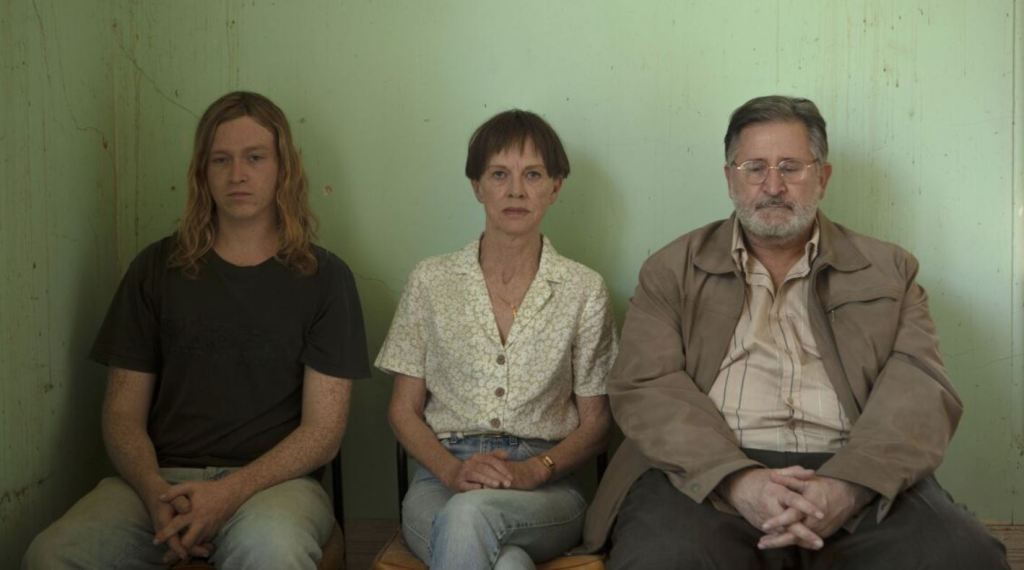
Nitram is about the life of a mentally troubled young man called ‘Nitram’ (based on the infamous Martin Bryant), prior to his becoming a mass-killer in the 1996 Port Arthur massacre in Tasmania. Caleb Landry Jones gives an outstanding performance as the mentally unstable Nitram, and is supported by excellent performances by Judy Davis and Anthony LaPaglia as his parents, and by Essie Davis as his rich eccentric supporter Helen. The film was controversial for its choice of such an infamous subject and fears raised for the effect on the relatives of those killed in 1996. However, the film only looks at Nitram’s life before the massacre and the effect of those around him on his mental state. The film itself has been generally praised as a work of drama, sweeping the 2021 AACTA Awards, winning Best Film Best Direction, Best Screenplay, Best Actor (Caleb Landry Jones), Best Actress (Judy Davis), Best Supporting Actor (Anthony LaPaglia), and Best Supporting Actress (Essie Davis). (See here for more information)
8. Lion (2016) (Garth Davis)
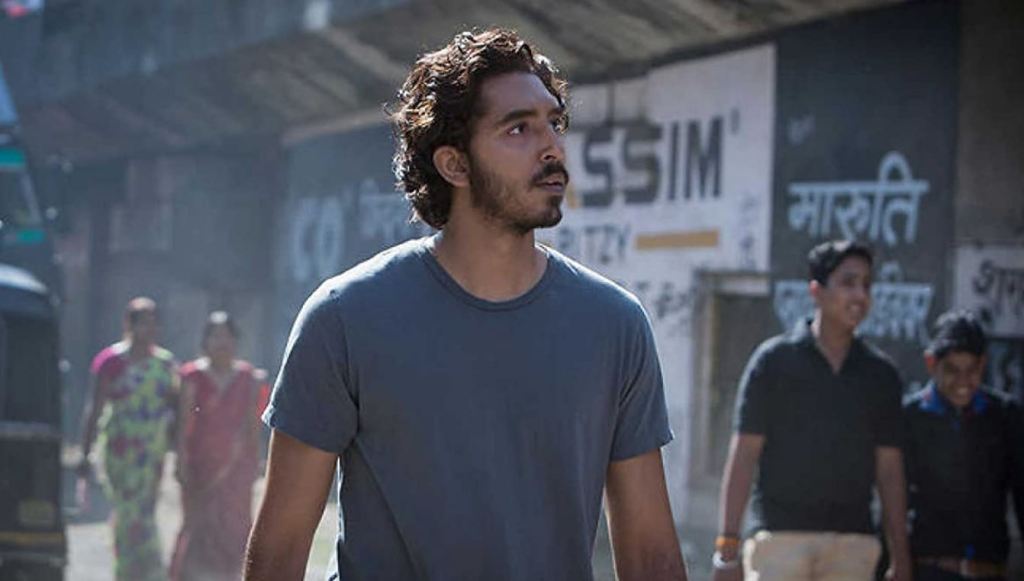
The true story of a small Indian boy, Saroo, who falls asleep on a train and wakes up in Calcutta with no idea of the name of his village or how to get back there. He is eventually adopted by an Australian couple, but when he grows up, he becomes obsessed with finding his real family. This is a moving and generally upbeat film about the effects of inter-country adoption on both the children and the adopting parents. The film is contains an interesting portrait of Indian society in all its diversity, with its close family ties and its harshness for those in poverty and for the 80,000 children who go missing every year. The child actors who play Saroo and his brother are amazing. The older Saroo is played by British actor Dev Patel who is also good as usual, and conveniently handsome. Nicole Kidman and David Wenham are fine as the very ordinary, decent Australian couple – both look a little dowdy and dull: caring, but a little lacking in personality. The film tells us more about India than Australia, but is recommended for its depiction of humanity and relationships. (See here for more information)
9. Beneath Clouds (2002) (Ivan Sen)
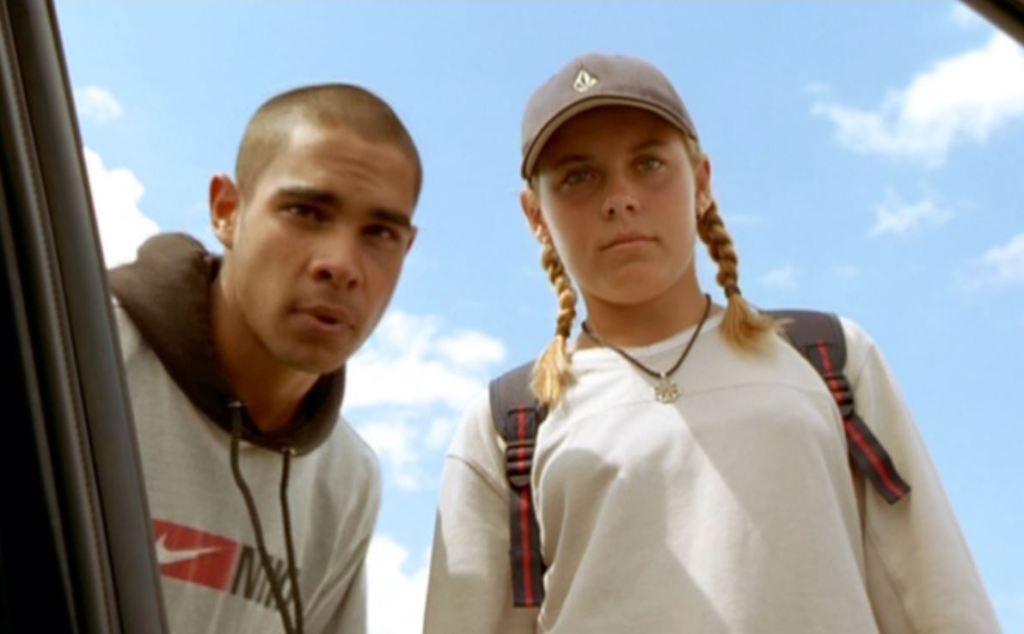
Two young Aboriginal teenagers, a girl running away from her mother to find her missing white father and a boy escaping from prison to visit his sick mother, meet and travel across inland NSW towards the coast together. This is a beautiful, touching film of two fragile young people travelling through the dreamy expanse of the northern NSW plains, slowly coming to understand each other and becoming friends. It explores issues of race and identity for contemporary Aboriginal people, and the difficulties in improving your life in small-town Australia. Ivan Sen, arguably the most successful of our Indigenous filmmakers, has a great feel for human emotions and unspoken communication, as well as a great eye for the power of our landscape. The film also examines how decisions have consequences which can derail our plans. Sen won the AFI best director award for this small gem of a film. (See here for more information)
10. Here Out West (2022) (Ana Kokkinos, Leah Purcell, Fadia Abboud, Lucy Gaffy, Julie Kalceff)

A grandmother steals her newborn granddaughter from a Western Sydney hospital, and starts a series of events that affect variety of characters from different ethnic groups who live and work in Sydney’s Western suburbs. This film consists of eight connected stories that take place over the course of one day, many of them involving visits to a certain Western Sydney hospital. Each of the stories captures the diversity and vibrancy of Sydney’s West: the grandmother and her daughter are struggling Anglo-Australians; the parking attendant she encounters is a Chilean poet; the nurse who sees the grandmother with the baby is a Philippino woman whose beloved husband and baby son still live in the Philippines; the man the grandmother accidentally hits is a Kurdish refugee musician struggling to find work; the three young mates who interrupt their fight over a girl to take him to hospital are Bengali, Afghani and African; the woman visiting her dying father in the hospital but who cannot understand what he is saying is also half-Bengali; the young Vietnamese man returning to his old Western Sydney home after making it in the Eastern Suburbs is also a friend of the Bengali man; and the Chinese restaurant owners, who previously lived in Myanmar, are the ones who help the grandmother at the end of the day. The film has many moments of poignancy as we see how important the concept of family is to each of the individuals. The film also shows how many of the characters feel a sense of displacement from their homelands, which some combination of political or economic conditions forced them to leave. This is a fascinating story, or group of stories, from contemporary Australia, and one of the best films which examines Australia’s movement from an Anglo-Celtic community to a true multicultural society over the course of a couple of generations. (See here for more information)
11. The Black Balloon (2008) (Elissa Down)
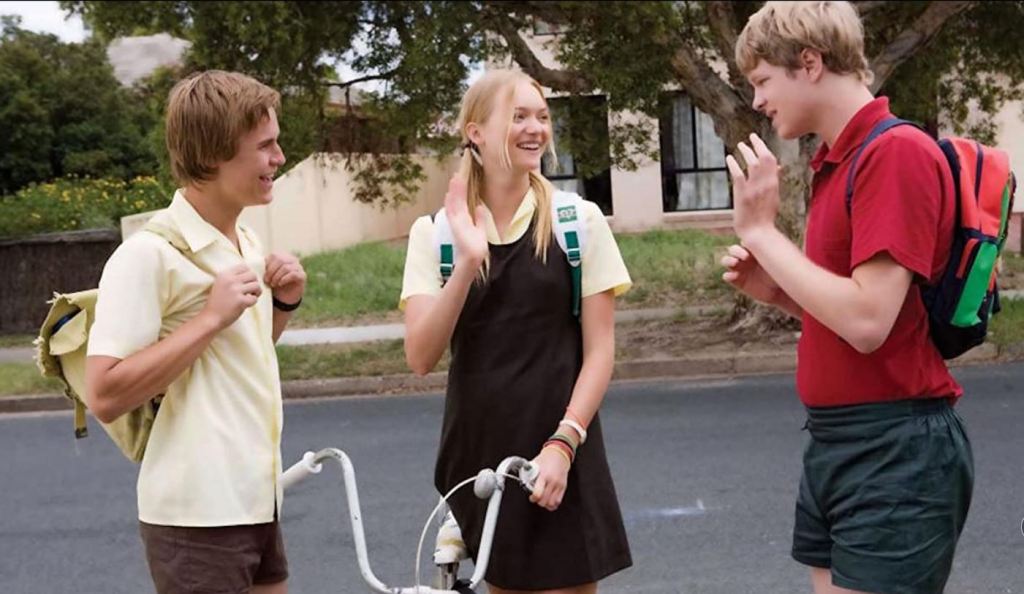
A family with an intellectually disabled teenage son makes sacrifices to cope with him, while the other son struggles to grow up and worries whether his new girlfriend will accept his brother. This 2007 AFI winner is an effective and affecting portrait of the difficulties faced by a family with an intellectually disabled teenage son, Charlie. Charlie rampages around the house, knocking things over, shouting, laughing, crying, running away etc. Charlie’s 15-year-old brother Thomas is the film’s focus, as Thomas tries to balance adolescence, a new school, new friends and a budding first romance, with his responsibilities towards his brother. Though the family remains loving, and the boy finds a smart girlfriend who can cope with Charlie, the overall impression is of the exhausting nature of caring for an intellectually disabled teenager. Beautifully filmed and acted, this film has much to teach us. The film won the 2007 AFI Best Film and Best Director awards, and Luke Ford and Toni Collette won the best supporting actor and actress awards for the film. (See here for more information)
12. Oranges and Sunshine (2010) (Jim Loach)
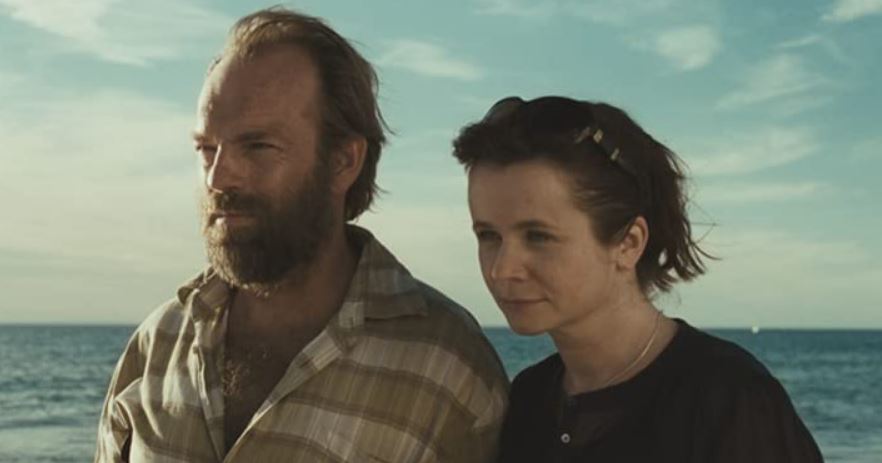
In the 1980s, Margaret Humphreys, a British social worker discovered that thousands of poor British children were sent to Australia (and NZ and Canada) in the decades following World War 2, without the knowledge of the public or even the children’s parents. Many children were exploited in Australian orphanages where they were overworked, underfed and exposed to physical or sexual violence, all of which left deep scars later in their lives. The film shows how this was exposed and some families reunited in recent years. This sad but true story is brought to life in a clear, mature, understated and un-hysterical way by British director Jim Loach, who shares his father’s dedication to important social issues. The story is shocking, though most is revealed through the testimonies to Ms Humphreys, rather than through graphic re-enactments. The film is angry, but in a quiet way, as are many of the former children. Like Australia’s stolen-generation scandal (see Rabbit-Proof Fence) that was hidden from the general public for years, this film shows us that the past was not as rosy as it is sometimes portrayed. This is a combined British-Australian film set in both Britain and Australia with enough major Australian characters, played by Australian actors, to be included in my list of Australian films. I recognise that the British component is greater (British writer, director and main character (Emily Watson)), but it still has enough Australian content for me. Watson’s quiet strength carries the film, but Australian actors Hugo Weaving and David Wenham, as two of the grown-up children seeking the truth about themselves, lend poignancy. (See here for more information)
13. Looking for Alibrandi (2000) (Kate Woods)

A young Italian-Australian teenager comes of age in Sydney, dealing with love, death, her absent father and her Italian family. This is an entertaining and charming film about growing up Italian and coming of age in Sydney in the 90s. Pia Miranda shines as the enthusiastic but irritable teenager trying to negotiate the usual teenage things of friendship, identity and romance, with additional angst about her Italian family with their unusual, noisy customs, and the bitterness of her father’s absence. Greta Scacchi and Anthony LaPaglia are good as the parents and Mathew Newton and Kick Gurry are fine as the boys in her life, but it is Miranda’s energy that drives the film. She won the AFI Best Actress award for this performance, and Greta Scacchi won the Best Supporting Actress Award. (See here for more information)
14. Charlies Country (2013) (Rolf de Heer)

An elderly Aboriginal man living in Arnhem land, not content with living on the fringes of white consumer culture under ‘whitefella’ laws, yearns to return to the traditional life on the land he remembers from his youth, but encounters difficulties. This is a slow, deliberate film giving insight into the frustrations faced by Aboriginal people today, even those who have retained a connection with their land, with David Gulpilil giving an award-winning performance as Charlie. Charlie’s encounters with others in Arnhem Land and Darwin show the difficulty in continuing a traditional life and the alienation of tribal people in large towns. Gulpilil expresses the anguish of Aboriginal people in a country dominated by an alien culture. Though a little too slow at times, the film has some interesting messages. Gulpilil won another AFI best actor award, proving what a fine actor he was for over 40 years. (See here for more information)
15. Japanese Story (2003) (Sue Brooks)

A female geologist for a mining company is ordered to show a Japanese businessman around the vast mining operations in WA. As they spend days driving around the desert, the cultural divide between the two slowly lessens, until fate takes an unexpected turn. This film explores the differences between the Japanese and Australian cultures, and the stereotypes each people have for each other, and how these differences and stereotypes can gradually be transcended. Toni Collette shows her versatility as her mood shifts from hostility to understanding, and from tenderness to sorrow to greater understanding. Gotaro Tsunashima is also good as the Japanese man who is at first repelled by the Australian, but gradually changes. The film moves in unexpected directions and challenges both characters to find qualities they did not know they had. The scenery is vast, everything is on a giant scale, dwarfing humanity and exposing our fragility. A gripping drama, it is unlike any other Australian story. This film won the 2003 AFI awards for best film and best direction, and Toni Collette won the best actress award. (See here for more information)
16. Beautiful Kate (2009) (Rachel Ward)
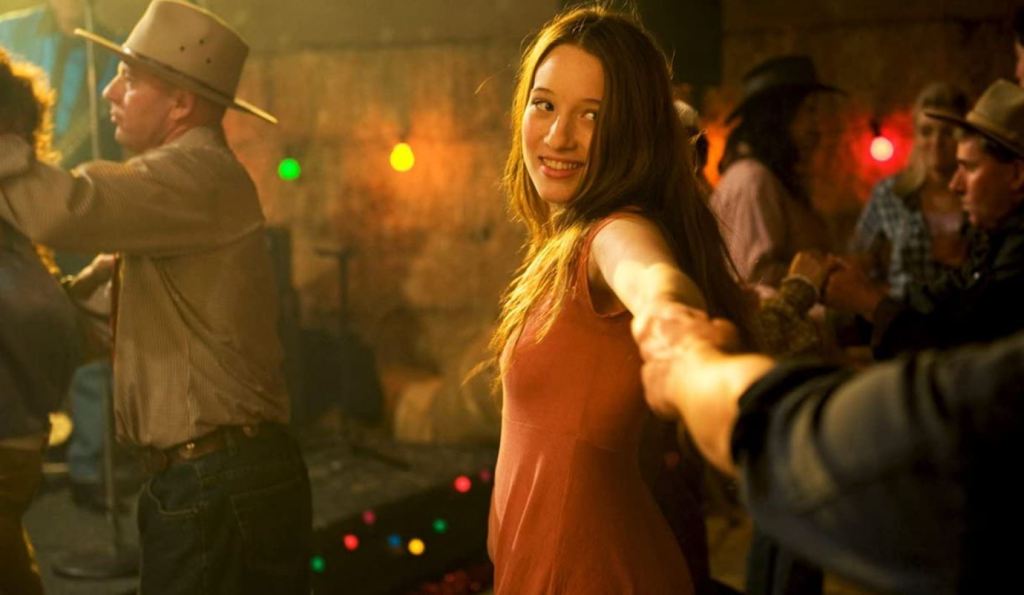
Ken (Ben Mendelsohn) returns with his girlfriend to his isolated childhood farmhouse to see his cantankerous dying father, played by Bryan Brown and his long suffering sister (Rachelle Griffiths). Ken argues with everyone, but is even more haunted by memories of his beloved twin sister Kate and their brother Cliff. This debut film from Rachel Ward is marvellously realised, atmospheric and sometimes shocking. This is a family with a lot of stubborn personalities and a lot of baggage, and the verbal fireworks start to fly as past resentments arise. But it is the haunting memory of Kate which obsesses Ken most on his return. Ben Mendelsohn, Bryan Brown, Rachel Griffiths and the Sophie Lowe as Kate are all excellent. The film looks great, capturing the rural isolation of the place, and the pacing is relentless towards the film’s revelation. A very impressive and memorable film. (See here for more information)
17. Jindabyne (2006) (Ray Lawrence)
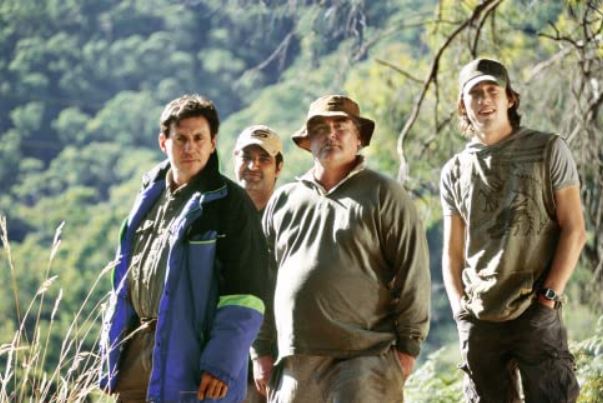
Four fishermen in a remote Snowy Mountains valley find the body of a young Aboriginal woman, but their actions after that set up further conflicts in their families and in the small community. Ray Lawrence only made three films in 20 years, including the wonderfully individual Lantana (2001) and Bliss (1986). This film travels similar territory to Lantana, searching for a young woman’s killer, and involving conflicts within four previously happy families. Though it’s not as successful as Lantana, there is still much to admire about this tense drama of guilt and suspicion. (See here for more information)
18. Noise (2007) (Matthew Saville)
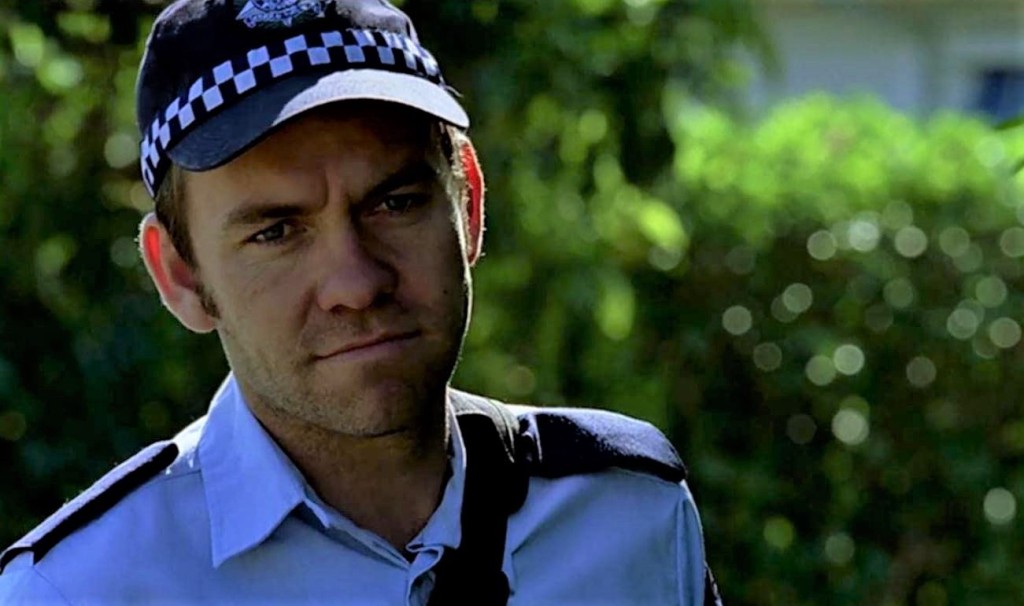
A Melbourne suburban cop with tinitus (an annoying ringing in his ears) is part of an investigation into a local murder as well as another into a train massacre. This is an unusual, atmospheric whodunnit, with a hero who is often disabled by a ringing in his ears, as he seeks clues to two bloody crimes. It’s a gritty but amiable observation of some poor Aussie suburbs and the characters that survive there. There is a sense of unease, but the cop’s not sure if he’s getting close to the criminals or if the tinitus is driving him crazy. Brendan Cowell is excellent as the laconic ‘everycop’ (cf. everyman), trying to deal with his girlfriend, his condition and his job. It’s a beautifully filmed piece, slow but satisfying. (See here for more information)
19. The Dry (2020) (Robert Connolly)

Aaron Falk, a federal cop, returns to his drought-stricken hometown for the funeral of Luke, an old-friend accused of murdering his family before shooting himself. He agrees to investigate, but is haunted by memories of an unsolved death of a girl when he and Luke were at school. This is an excellent adaptation of Jane Harper’s popular mystery novel about small town communities and their strengths and weaknesses. It is a story of a man’s return to the place he grew up, but it is also a story of painful memories, hidden secrets, unresolved accusations, old guilt and regrets. Eric Bana, back from Hollywood after a long-time, plays the cop with a very Australian laconicism, playing his emotional cards close to his chest. The rest of the large cast are also impressive as the range of characters found in a small town. It’s a gripping story, as Aaron slowly pieces together both the recent crime, and the older death of the girl. Beautifully filmed, the film captures the isolation and subtle beauties of the Australian countryside, even during a drought. (See here for more information)
20. Lucky Miles (2007) (Michael James Rowland)

Three fugitives (an Iraqi asylum-seeker, a Cambodian man looking for his Australian father and an Indonesian sailor) wander the West Australian desert together looking for Australians or maybe a bus to a town somewhere. Meanwhile three blokes from the Army Reserve attempt to locate them. This is a witty film about a big issue, the flight of asylum seekers to western countries such as Australia. Made in the middle of Australia’s debates about onshore and offshore detention of asylum seekers who attempt to reach Australia, this film humanises the situation, not as melodrama, but as comedy – a comedy with a serious message of course – a dramedy if you will. The film works well, examining cultural differences as well as human commonalities. The landscape is beautifully filmed and reminds us of the vast emptiness of much of Australia. An entertaining look at a serious issue. (See here for more information)
21. My Year Without Sex (2009) (Sarah Watt)

A mother of two makes a record of a year in which she is forbidden over-excitement, and particularly sex, while recovering from a cerebral aneurysm. This enjoyable follow-up to director Watt’s brilliant Look Both Ways, does not reach the heights of its predecessor, but works as a thoughtful drama-comedy about relationships in a similar way, with lots of wry observations of the human condition in general and of Australians in particular. The ever-feisty Sacha Horler (always a prickly favourite) plays the woman, Natalie, and the ever-reliable Matt Day plays her husband. It’s always a good sign when these two are in a picture. Sadly it was Sarah Watt’s last film, so we have been deprived of more of her wise, beautiful, funny gems. (See here for more information)
22. A Lion Returns (2020) (Serhat Caradee)
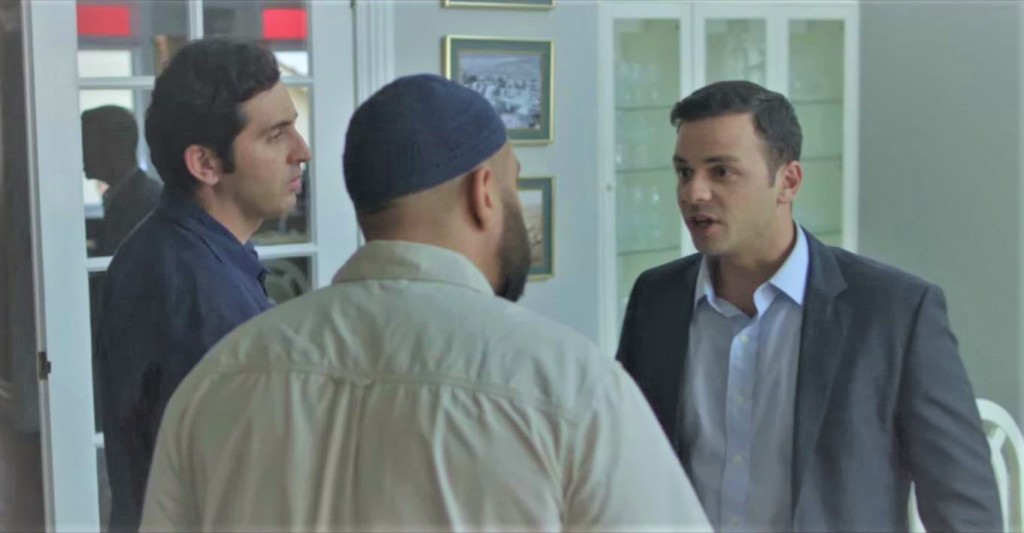
A young Muslim man, Jamal, returns home to Australia from a stint fighting with ISIS in Syria, and wants to see his dying mother, but his family have disowned him, and he must persuade his brother Omar to let him have one last visit. This is a powerful look at a topical issue – the issue of modern Islamist terrorism in general and ISIS in particular – from the point of view of the families of the young men who left to travel to fight for ISIS in Syria and Iraq. The film takes place around Jamal’s family home as he argues with his brother in the back of a car about the need for jihad and the shame his leaving brought to his family, before Jamal is allowed into the house to face the more formidable challenges of his dying mother, the father who has disowned him, and the wife and child he abandoned to join ISIS. Meanwhile in the background Uncle Yahya (Buddy Dannoun) is playing a double game, hinting that Jamal will face more pressure to rejoin ISIS. Made with a group of little-known actors, this film is a dramatic entry into the world of Muslims trying to live in a Western country, and the difficulties of living a good life in such a complex multicultural world. Tyler De Nawi gives a convincing performance as Jamal, a man torn between different visions of righteousness, and all the other performances are spot-on. (See here for more information)
23. Blessed (2009) (Ana Kokkinos)
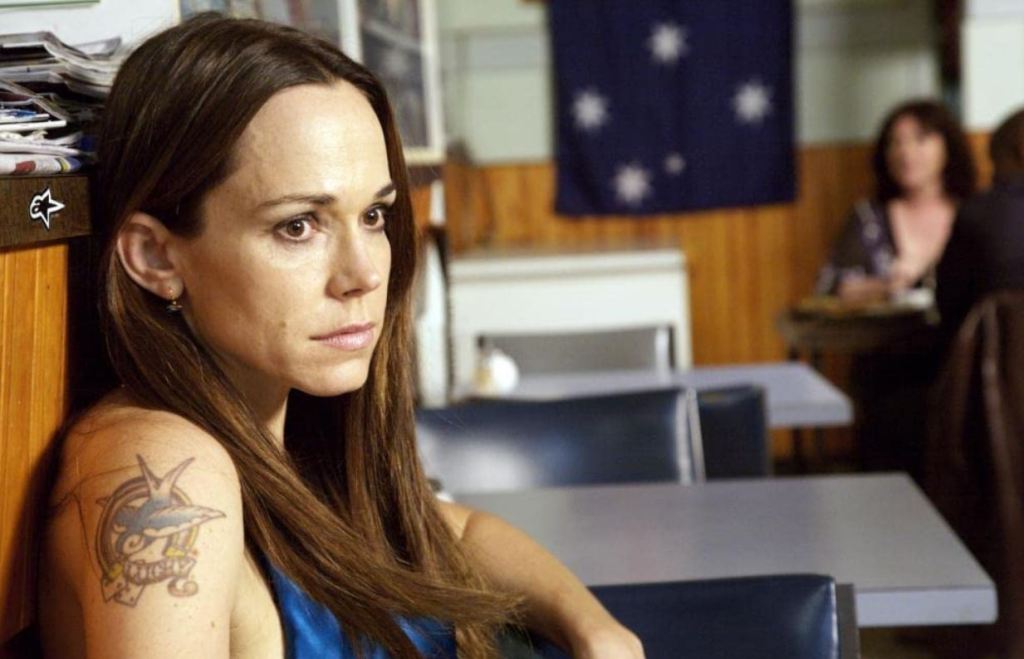
This film follows seven children and their five working-class mothers over the course of a day, where both adults and children make poor decisions and some go missing. Anna Kokkinos’s fourth film is about parents and children, who are faced with everyday pressures, and who are struggling to get through the days, It stars Frances O’Connor, Miranda Otto, Deborra-Lee Furness, Wayne Blair and many more. The film has plenty of Kokkinos’s trademark toughness, mixed with compassion for working parents trying to do the best for their kids, even though they slip up sometimes (or even often), as well as for kids trying to be the best they can when life has not given them much. This film has lots of heart and some beautiful performances. Like Kokkinos’s first full-length feature, Head On (1998), this film was nominated for the AFI Best Film award, and Frances O’Connor won the AFI Best Actress award for her portrayal of the single mum Rhonda. (See here for more information)
24. Mullet (2001) (David Caesar)

A young local rebel/layabout, nicknamed Mullet (after the low quality fish he likes to catch), suddenly returns to his hometown south of Sydney three years after he abruptly disappeared, and has to deal with all the loose ends he left behind, as well as the fact that his old girlfriend has married his brother. This wonderfully dry, laconic comedy/drama is not for everyone, but if you get on its wavelength, it is full of wonderful observations of the Australian character. Ben Mendelsohn is delightfully surly as Mullet, the ex-star of the local football team, who seems to have lost his way. His nickname Mullet not only refers to the low-value fish he likes to catch, but also to the alleged stupidity of fish in a bowl, which as they circle the bowl don’t realize that they have seen it all before. Director David Caesar is an astute observer of Australians, their language and the way they communicate, or fail to, and this movie is full of small delights. (See here for more information)
25. Holding the Man (2015) (Neil Armfield)
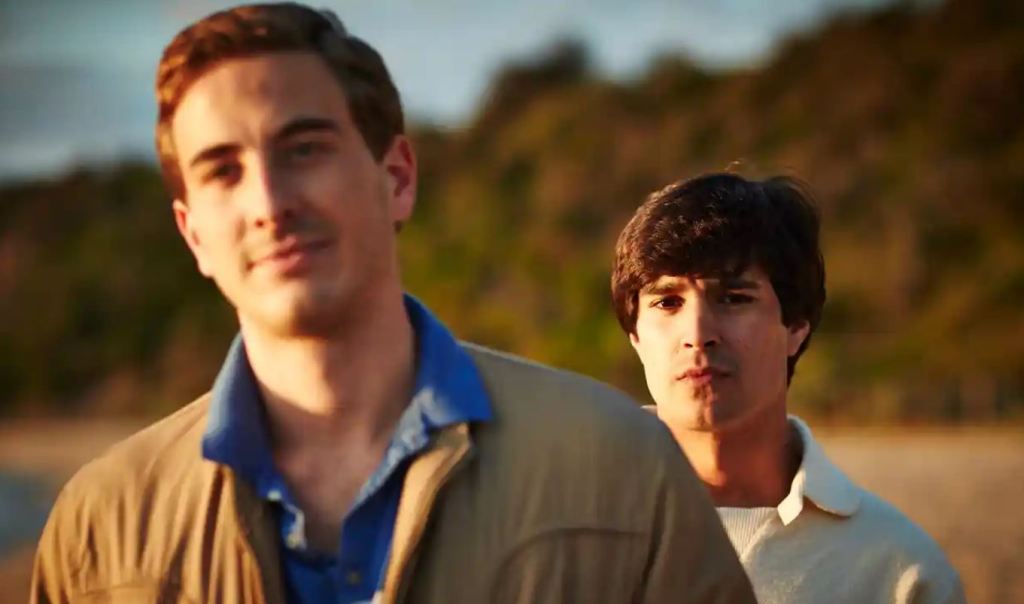
Two schoolboys fall in love and live together until AIDS strikes them. This is a fine adaptation of Timothy Conigrave’s memoir and the stage play about a couple of schoolboys who meet and live together for most of their lives, despite one loving acting and the other loving football (and Essendon in particular). The film captures their joys and sorrows, triumphs and defeats, but above all their love for each other. The lead actors Ryan Corr and Craig Stott are very good, but Australian/NZ greats Kerry Fox, Camilla Ah Kin, Guy Pearce and Anthony LaPaglia are also excellent as the four parents who have various degrees of difficulty accepting their son’s gayness. Apart from looking maturely at gay relationships, the film features the problems of dealing with prejudice, of coming out to your family and friends, and dealing with your lover’s family’s disputes over his will after his death, but these are all looked at in a very natural way, without the didacticism that some films fall into. The film was nominated for many AACTA awards but missed out in what was a very strong year for Oz cinema (competing with Mad Max: Fury Road, The Dressmaker and Last Cab to Darwin among others). (See here for more information)
26. Last Cab to Darwin (2015) (Jeremy Sims)
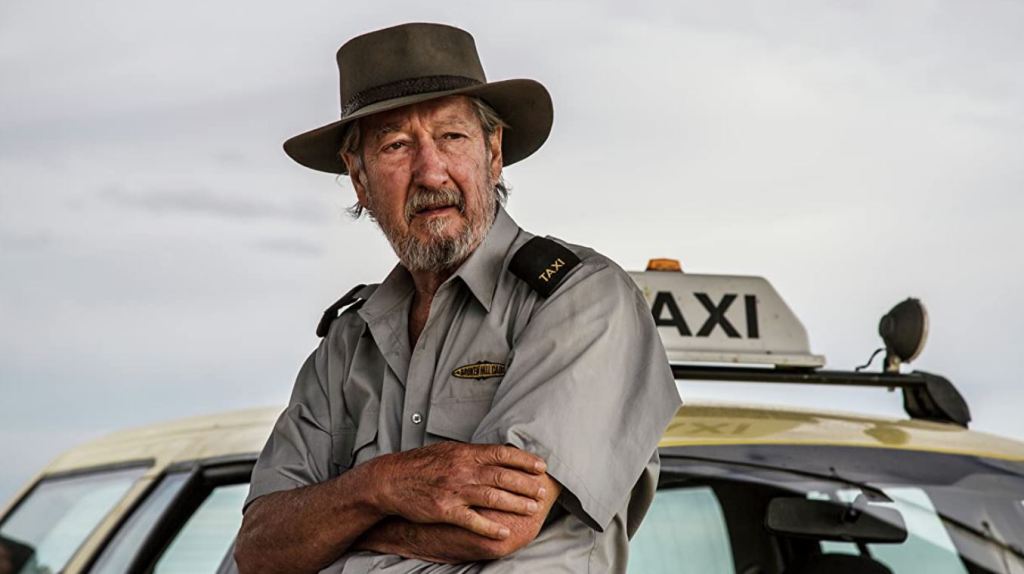
A taxi driver who is dying of cancer takes a road trip to Darwin to seek the help of a euthanasia advocate, and reassesses his life on the trip. This story of a dying man’s last drive from Broken Hill to Darwin starts a little roughly, but, like Rex the driver, redeems itself somewhat during the course of his long drive. It has some memorable performances, from Michael Caton as Rex, Ningali Lawford-Wolf as Polly, his Aboriginal neighbour who has been his unacknowledged lover for many years and whom he treats so poorly when he discovers he is dying, and Mark Coles Smith, a garrulous young Aboriginal man from Oonadatta, escaping debts and hoping to become a footballer, who joins Rex on the trip. It’s another excellent film about dealing with cancer (Australia has a number of films on this topic), but has more to say on love, racism and race relations in outback Australia. (See here for more information)
27. Red Dog (2011) (Kriv Stenders)

The film tells of the adventures of a kelpie (an Australian red sheep dog), who roamed the mining country of the Pilbarra (in northwestern Australia) until he chose an American as his master. This heart-warming film was based on a true story, and was very popular at the box-office in Australia. It’s part-bush yarn, part-travelogue of the vast red plains and mountains of the northwest of Australia. The loveable dog, who portrays an omniscience not seen since Skippy hopped into our young hearts, has the best moments of the film, but there is a cast of great Australian support actors of whom Rachel Taylor has the least clichéd role. The film has polarised viewers somewhat, with many loving the film, and some disliking its tone, but if you are a dog-lover you should enjoy it. The countryside also looks spectactular. (See here for more information)
28. The Jammed (2007) (Dee McLachlan)

A young insurance clerk finds herself reluctantly drawn into the search for a young Chinese woman trapped in an illegal brothel in Melbourne. This is an involving drama about the heart-breaking crime of sex-trafficking and looks at the situation of three young women, two from China and one from Russia, who have been tricked into prostitution by criminal gangs. Once in Australia, the women are told that they must work off the debt incurred by bringing them to Australia, and are afraid to approach the police for fear of deportation and shame in their home country. The film is marked by moving performances from the three female leads: Veronica Sywak is very good as the reluctant Australian clerk, drawn into the situation with increasing horror; Emma Lung is also good as Crystal, one of the trafficked women; and Saskia Burmeister is both unrecognisable and wonderful as the Russian Vanya. It’s not a happy film, but it is a gripping and important one. (See here for more information)
29. Innocence (2000) (Paul Cox)

An old man and woman meet again in Adelaide, 50 years after they had a passionate youthful affair, and they decide renew their old relationship, despite the woman still being married. Paul Cox is the most European of Australian directors, and this story of love reblooming is one of his best films. Julia Blake shines as Claire, a woman who has had a reasonably happy marriage, but who has never recaptured the passion of her youthful affair with Andreas in Belgium after the war. Likewise Charles Tingwell is very likeable as the musician Andreas, who lost his wife in an accident many years ago, and has decided to recontact the woman he should have married many years before. As their relationship moves from nostalgia to something more intense, Claire must confront her bemused husband (Terry Norris). It’s a positive depiction of a new love that’s possible, even as your life nears its end. The film won a number of awards for both Paul Cox and Julia Blake. (See here for more information)
30. Unfinished Sky (2007) (Peter Duncan)

A Queensland farmer gives refuge to an Afghan woman who has fled from criminals. This is a very effective drama about a dour middle aged farmer whose life is changed when an escaped Afghan woman seeks to escape from her exploiters. They grow to trust each other, but the danger from her pursuers closes in. This film is tense, tender and thought-provoking, coming during the debates about accepting refugees, particularly Muslim refugees in Australia. William McInnes transcends his wooden style, and Dutch actress, Monic Hendrickx, is very effective as the Afgan woman (interestingly, she also played a Polish woman in an earlier Dutch version of this story, The Polish Bride). McInnes and Hendrickx picked up the AFI best actor and actress awards for this film. (See here for more information)
31. Little Fish (2005) (Rowan Woods)

Tracy, a former junkie is trying to go straight and help her family and friends, despite the odds stacked against her. Superb acting by Cate Blanchett as Tracey and Hugo Weaving as Lionel, Tracey’s mum’s junkie ex-boyfriend, marks this downbeat film about junkies and ex-junkies in western Sydney’s blue-collar belt. It’s an acutely observed account of the uneven struggles of family members to break free of drug habits and make ends meet in a depressing situation and uninspiring environment. Blanchett and Weaving won the AFI Best Actress and Actor awards for their perceptive portrayals of troubled individuals. (See here for more information)
32. Three Dollars (2005) (Robert Connolly)
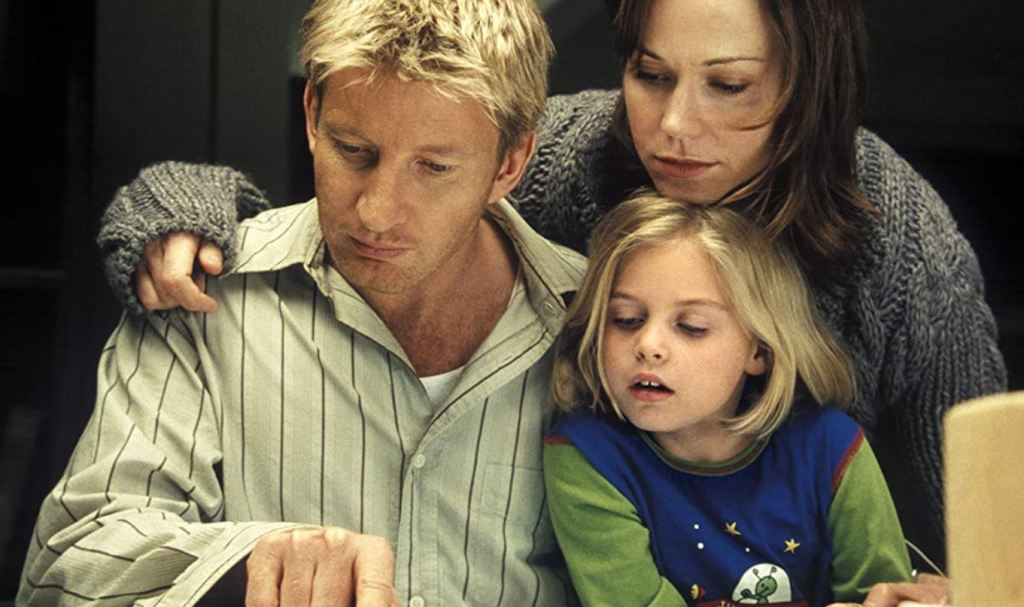
A government chemical engineer with a happy family suddenly loses his job, and is engulfed in economic difficulties which threaten his house and family. This is a thought-provoking film about a good man trying to survive in the real world. David Wenham finds throughout the film that good deeds are not always rewarded and often come at a cost to his personal life. This film is serious, but does not dwell on the depressing aspects of the situation, looking for the positives during periods of financial stress. Both David Wenham and Frances O’Connor are excellent in the leads. (See here for more information)
33. Last Train to Freo (2006) (Jeremy Sims)
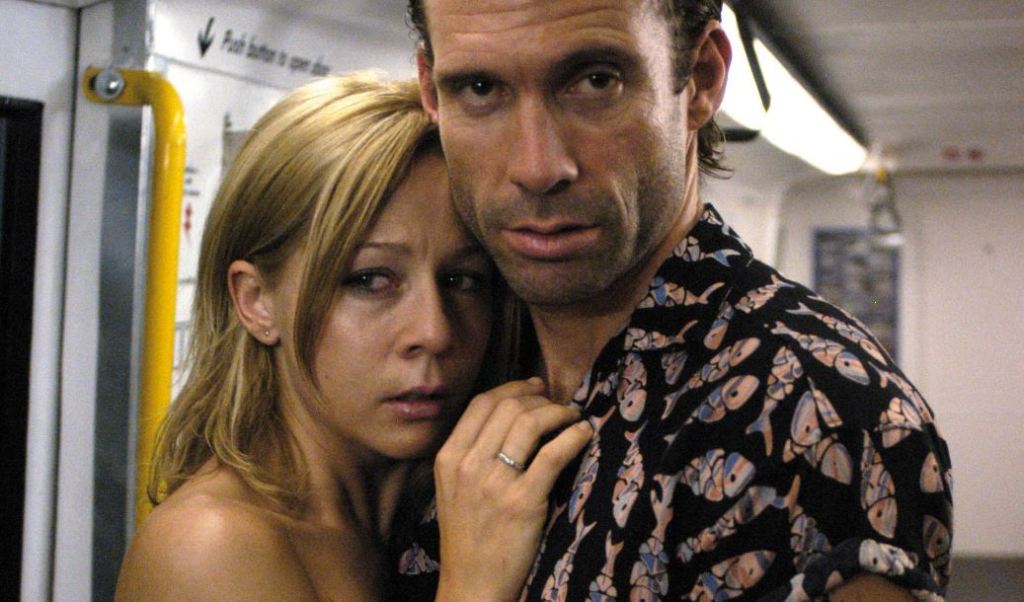
Two bored, noisy ex-cons catch the almost-empty last train from Perth to Freo (Freemantle), much to the discomfit of the two or three other passengers. This is a first-rate drama, with a high level of suspense about whether the two louts’ friendly aggression will result in serious violence, and a hatful of surprises when people turn out to be something other than what they seem. Add the wonderful dialogue (adapted by Reg Cribb from his 2001 play The Return), an award-winning performance by Steve LeMarquand as ‘The Tall Thug’, and excellent support performances by Tom Budge, Gigi Edgley and Glenn Hazeldine, and you have a film that exceeds the expectations of such a simple setup. This was actor Jeremy Sims’ directorial debut and he has gone on to make three more excellent films. (See here for more information)
34. Emu Runner (2018) (Imogen Thomas)
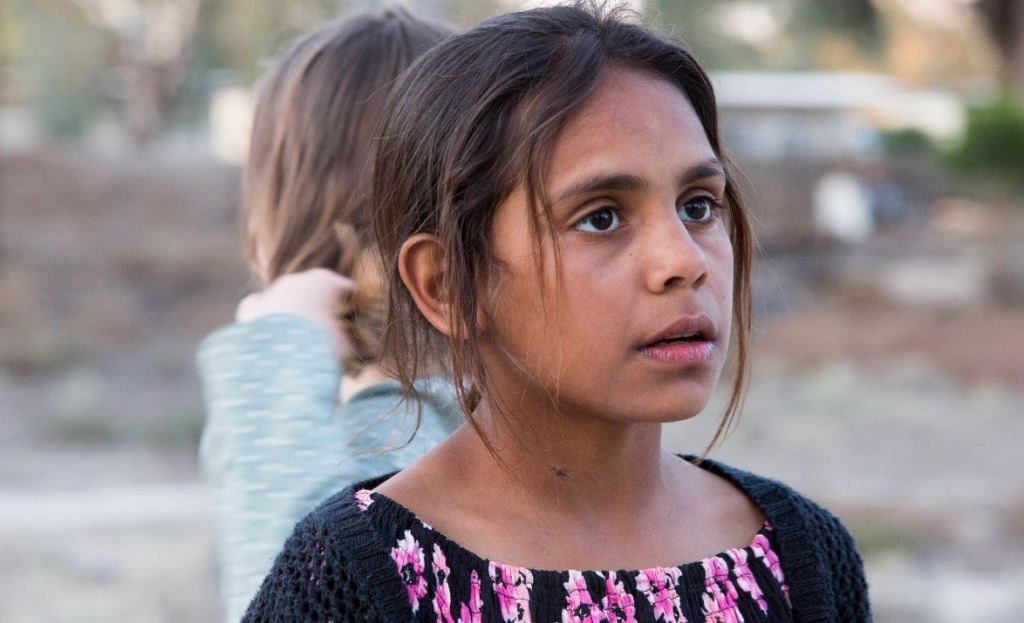
A nine-year-old Aboriginal and her family struggle to carry on after her mother’s sudden death. Only her enjoyment of running and her attachment to her totemic emus help her get through the pain. The beautiful and natural performance of eleven-year-old Rhae-Kye Waites, a Brewarinna local, as the schoolgirl Gem, ensures the success of this low-key but engaging and ultimately moving, story of a young Aboriginal girl suddenly left motherless. We experience the world through her eyes, though her mother’s death has also affected her father, who struggles to balance his need to work with the need to care for his children, as well as her older sister and brother. Though the film moves slowly for its first half, another crisis occurs which threatens to break up the family, and Gem needs to call upon the knowledge her mother taught her to get through it. This film sneaks up gradually on you to leave a deep impression. Wayne Blair is good as ever as Gem’s father, and the rest of the Aboriginal cast do a fine job representing the quiet support of Gem’s extended family. Rob Carlton and Georgia Blizzard play well-meaning but still authoritarian white officials, whose misunderstanding of Aboriginal ways almost leads to a disaster. This is a worthy addition to our canon of indigenous films. (See here for more information)
35. The Daughter (2016) (Simon Stone)
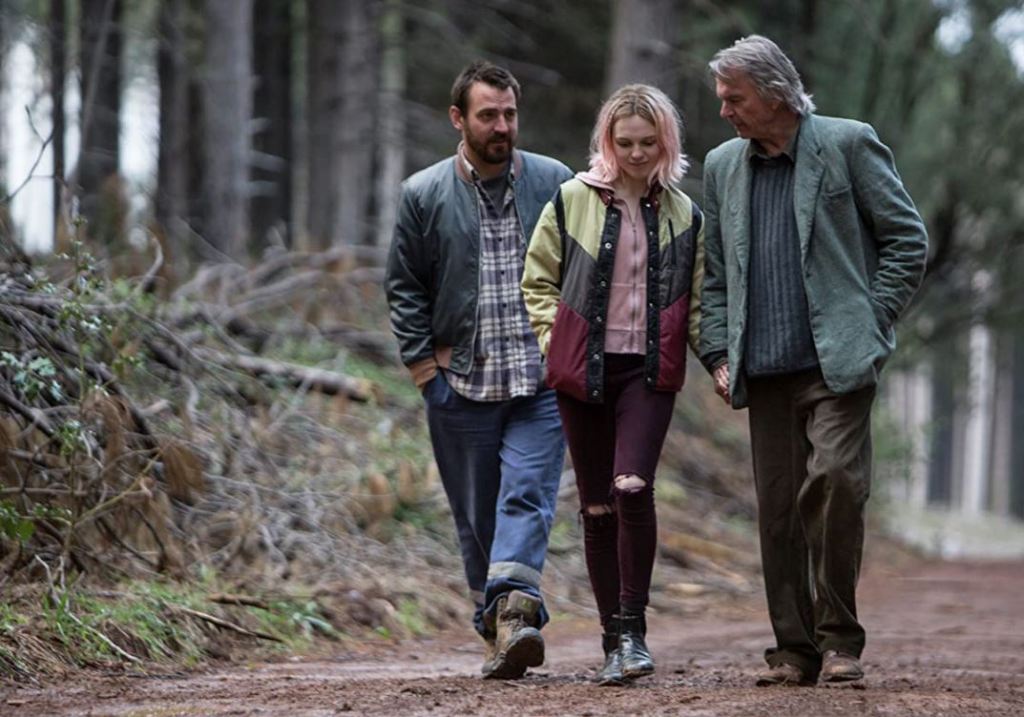
The return of a rich man’s son to a small town for his father’s second marriage brings up hidden secrets and dramas which threaten his father’s and his best friend’s marriages. This is the second and more ambitious attempt to adapt Henrik Ibsen’s tragic play, The Wild Duck, to an Australian setting, and while it has some problems, it is thought-provoking. Where it works, it shows the dangers of dishonesty and selfishness in relationships, and how one destructive individual can threaten the happiness of essentially decent people. Set in the misty forests of Tumut in the foothills of the Snowy Mountains, the film has a dark, Scandinavian ambiance. It has a wonderful cast of Australia’s best actors and Odessa Young and Miranda Otto won AACTA awards for the Best Actress and Best Supporting Actress of 2016. Sam Neill also gives an excellent performance, but the American import Paul Schneider seems a bit out of place. (See here for more information)
36. Mad Bastards (2010) (Brendan Fletcher)

An Aboriginal man travels from Perth to the Kimberley to meet the 13-year-old son he’s never met and reconcile with the boy’s mother. This film offers a new, positive take on the problems facing many Aboriginal people in Australia today. Unlike some other films, where the problems of unemployment, dispossession, family breakdown, violence and drug abuse prove to be too much for young indigenous Australians, Fletcher’s film tries to find positive ways to face all these problems and to rebuild families through encouraging male responsibility. The film is based upon real stories of individuals in West Australia’s Kimberley region, and uses largely unknown actors with real-life experience of the problems of violence and substance-abuse. The director’s use of the gentle, positive music of the Pigram Brothers, a country folk blues band from Broome, helps to undercut the anger and violence that the characters are trying to overcome. All of the main actors are excellent and their characters will remain with you after the film. Dean Daley-Jones is particularly impressive as the angry tough-guy TJ, with a background of brawling, drunkenness and prison which he is trying to overcome by meeting the son he has never known and reconciling with the woman he mistreated. Ngaire Pigram is great as the woman, Nella, full of anger at what life has dealt her and drinking too much, but still hopeful of change. Lucas Yeeda is wonderful as Nella’s 13-year-old son, Bullet, resentful of his mother and absent father and on the brink of adulthood. Greg Tait plays the tough cop, Texas, who has a one-man crusade to break the cycle of drink and brawling that part of his remote community experience. As the father of Nella, he has an even greater interest in TJ’s meeting with Nella and Bullet. It’s an interesting and moving portrait of a community in an isolated and beautiful region of Australia. (See here for more information)
37. The Bank (2001) (Robert Connolly)

A mathematician working at a big bank discovers a formula to predict stock movements, and his CEO plans to make a fortune at the expense of everyone else. This is a gripping and believable thriller about a ruthless bank CEO and a mathematician whose formulae and computer programmes could enrich the bank. David Wenham is at his enigmatic best as the mathematician. Anthony LaPaglia is well cast as the tough CEO, and Sibylla Budd (a TV actress unfortunately rarely seen in films) is alluring as the mathematician’s girlfriend who may be working for the other side. The film is well paced with lots of twists and turns, and is a involving critique of the more craven forms of capitalism. (See here for more information)
38. Satellite Boy (2012) (Catriona McKenzie)
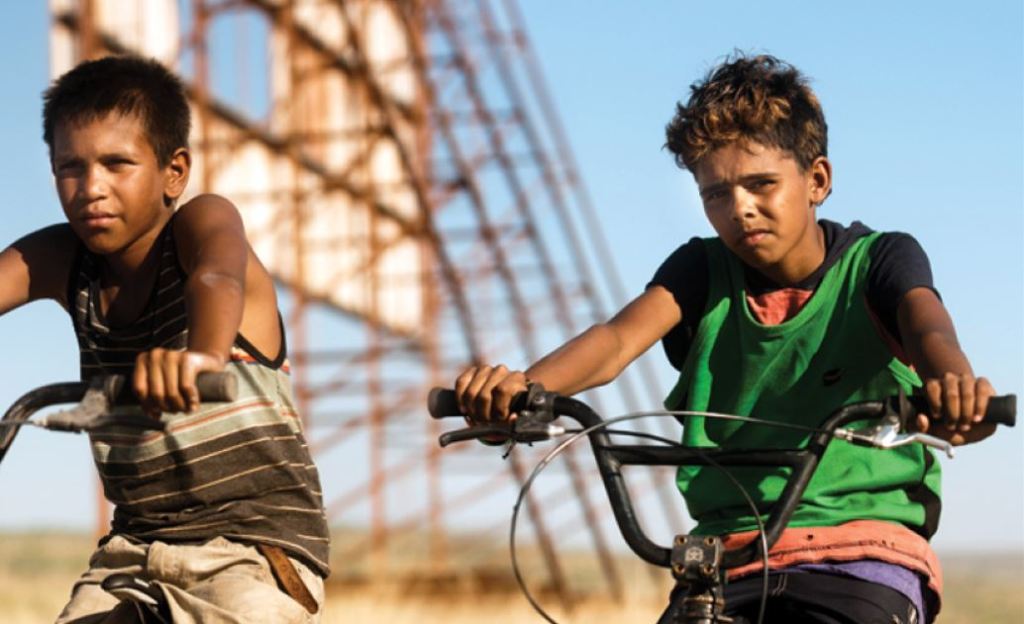
A young Aboriginal boy, lives in an abandoned drive-in in Western Australia’s isolated Kimberley region with his grandfather, played by David Gulpilil, who tries to bring up the boy with a knowledge of his culture. When a mining company threatens to destroy his home, he sets off by bicycle with a young friend to travel to the far-off mining office to stop the development. It’s a heartfelt and somewhat hopeful film about a young Aboriginal kid whose mother has left him in his grandfather’s loving but aging hands. The child actors are great, and their infectious enthusiasm carries the film along. The ending, though a little fairy-tale, is satisfying and the film looks at the big issues that affect the lives of children in this isolated environment, but not in a way that interferes with this touching story of a boy trying to get a better life. (See here for more information)
39. 2.37 (2006) (Murali Thalluri)

Six high school students struggle with their personal issues during a day in which one of them commits suicide in a school bathroom. This is a well-made and gripping drama about teenage angst with excellent performances from a group of unknown actors, including Teresa Palmer in her first film. The film shows the anxieties, fears and desires of teenagers, which sometimes become too much for them to bear. The film has been controversial with some critics due to its similarity to Gus Van Sant’s Elephant (2003), but as a drama, it is very effective and convincing. Another issue which concerned some critics was the depiction of the suicide which some thought too graphic, though I did not think it was gratuitous. In the end though, this film is a gripping drama, as we wonder throughout the film which of these troubled teens will be the one found in the bathroom at the end of the film. The 20-year-old first time director has not made another film since then. (See here for more information)
40. Alexandra’s Project (2003) (Rolf de Heer)
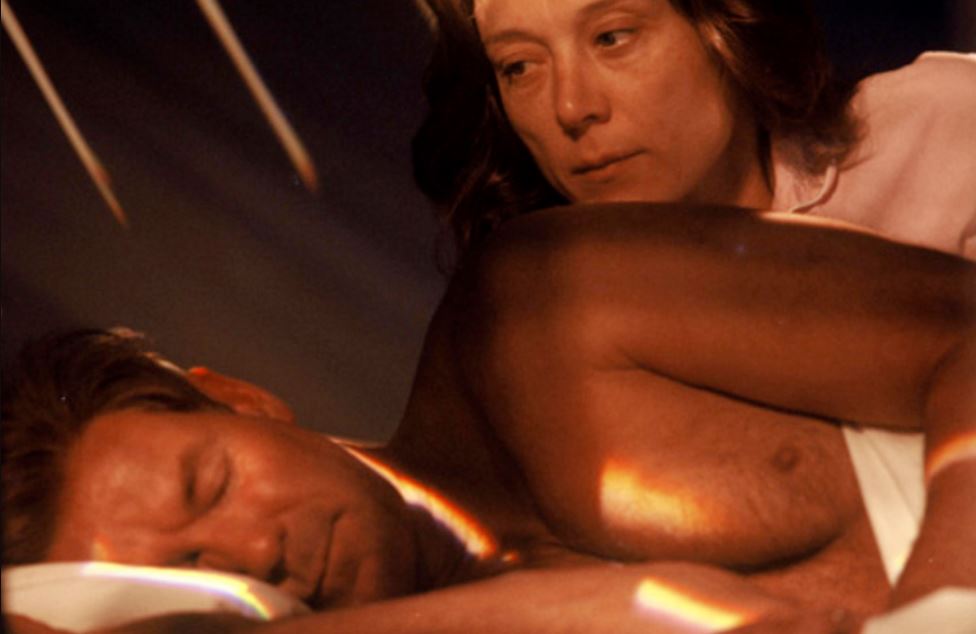
A long-suffering wife seeks revenge on her husband in an unusual way. Rolf de Heer was never afraid to take on new genres and odd themes, and this is a gripping and disturbing pyscho-drama about a housewife’s revenge on her shocked husband. Gary Sweet, famous as a tough Aussie hero from such TV shows as Police Rescue, plays Steve, a hard-working guy who spends most of his time at the office, leaving his wife, Alexandra, to look after the neat suburban house and the two kids. But Alexandra feels ignored and dissatisfied and prepares a surprise birthday for Steve that he’ll never forget. It’s shocking, claustrophobic and unforgettable. (Incidentally, this is not the first time that de Heer has made a film about a woman trapping a man in a house – he made Bad Boy Bubby 10 years earlier.) (See here for more information)
41. Caterpillar Wish (2006) (Sandra Sciberras)

A teenage girl in a small South Australian coastal town embarks on a quest to figure out which of her mother’s male acquaintances is her father. This is a sweet story of a girl’s desire to know the identity of her father, and the problems that causes for other people in the town. The film is beautifully acted and filmed. The action takes place in a small coastal town, and the beauty and rhythms of the place are well caught by the director. Victoria Thaine’s performance as the girl, Emily, is the key to the film’s success, but Susie Porter as her mother and the other actors do a great job as well. (See here for more information)
42. Ride Like a Girl (2019) (Rachel Griffiths)

This is the true story of Michelle Payne, the first female jockey to win the Melbourne Cup, in 2015. It’s an entertaining story of a young woman’s perseverance and success in overcoming the physical challenges and entrenched prejudice to triumph in a male-dominated sport. The film also looks at the remarkable family from which Michelle came. As the youngest of ten children without a mother, she grew up in a horse and racing obsessed family where most of the children became either jockies or strappers. While her sisters marry, Michelle perseveres, overcoming injury and sexism to succeed in a fearfully competitive sport. Teresa Palmer is convincing as Michelle, Sam Neill is great as always playing her obsessed father who is reluctant to forgive her quest for success, but Stevie Payne, who is the real Michelle Payne’s downs-syndrome brother, steals the show playing himself, as he stands by Michelle through thick and thin. A heart-warming story for the whole family, but especially for girls and other horse-lovers. (See here for more information)
43. Till Human Voices Wake Us (2002) (Michael Petroni)
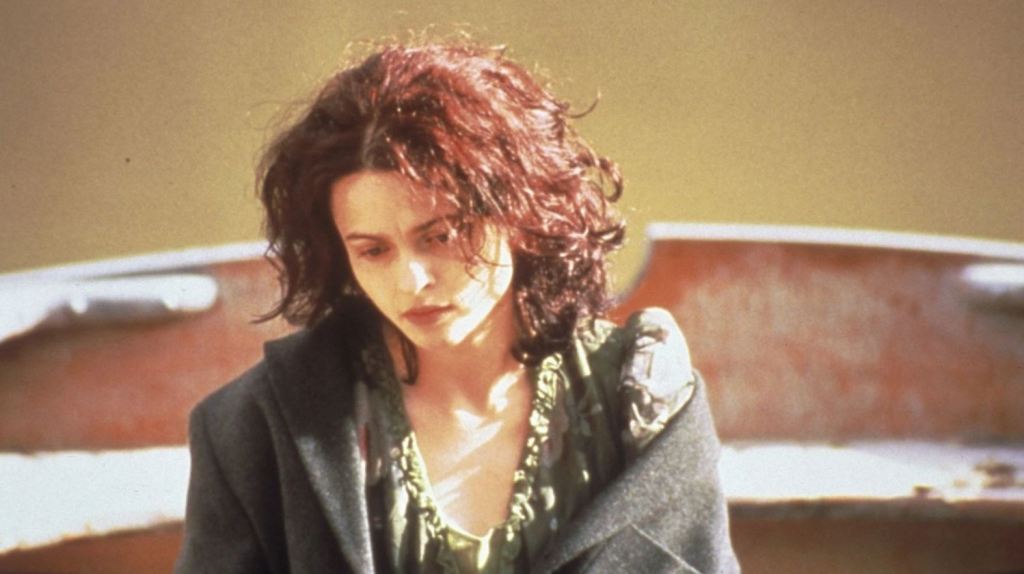
A man is haunted by the memory of his childhood girlfriend who drowned accidentally when they were swimming in the local river one night. When he returns to his hometown many years later, he saves a strange woman from drowning in the same river. This atmospheric ‘metaphysical romance’ asks more questions than it answers, but it is lovely to watch and try to figure out if the older woman is connected to the drowned girl. It’s beautifully filmed and Guy Pearce and Helena Bonham-Carter are the attractive leads in this mysterious gothic romance. Not everyone will have patience for such a dreamy irresolute film, but it may come back in your dreams later. (See here for more information)
44. The Boys are Back (2009) (Scott Hicks)

After the death of his wife, a journalist is left alone to care for his six-year-old son. Then his teenage son from his first marriage arrives from the UK to stay with him, testing his emotional resources even further. British star Clive Owen is very good in this unusual look at fathers and sons. Owen, who left the tough parts of parenting to his wife, has to find out the hard way what makes a good parent, and makes a lot of mistakes along the way to becoming a good single dad. The other actors are also fine, especially Julia Blake as his mother-in-law, but also George MacKay and Nicholas McAnulty as the kids, and Emma Booth as a single mum who befriends him and gives him much-needed advice. This is a touching and entertaining look at the difficulties of single-parenting in modern Australia. (See here for more information)
45. Candy (2006) (Neil Armfield)
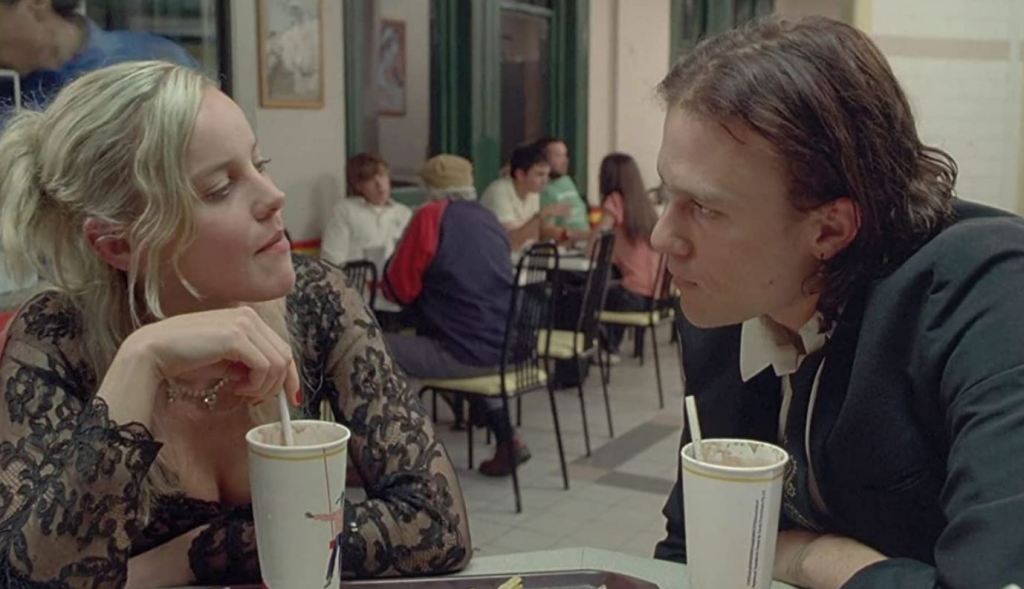
Two young people, an artist and a poet, fall deeply in love. But then they try heroin and become addicted to it, and their lives become gradually drained of meaning. The heroin slowly takes over their personalities and leads them into a world of degradation as their love becomes a shadow of its former self. Both Heath Ledger and Abbie Cornish give distinguished performances as the bright, young, beautiful people whose lives and love are gradually diminished by their addiction. They are supported by a top-notch cast, including Geoffrey Rush, Tony Martin, and Noni Hazlehurst. The film strongly demonstrates the harm that some drugs can do. Some people find this film very moving, while others find it only depressing and painful to watch. (See here for more information)
46. Walking on Water (2002) (Tony Ayres)
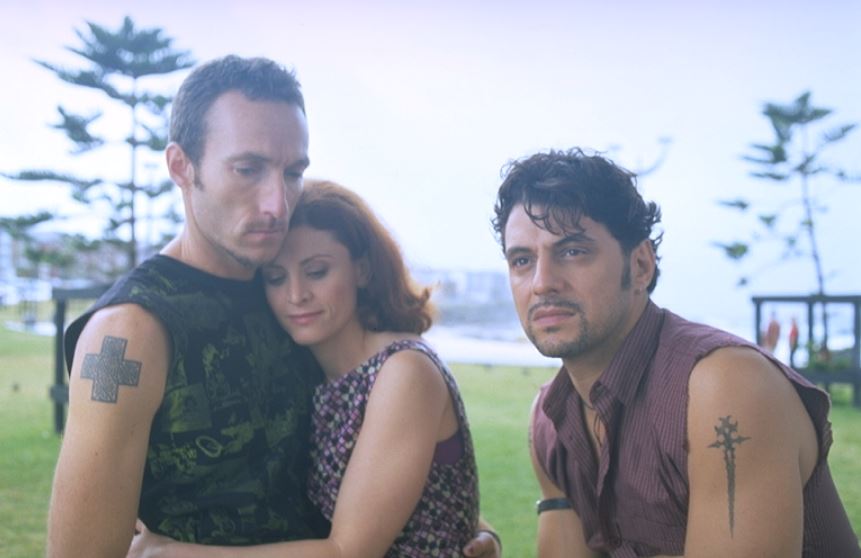
The flatmates and family of a dead gay man find it a struggle to cope with his absence. This is a sad but realistic drama about young people in Sydney coping after a friend’s slow death from AIDS. The film is understandably emotional, but also has some comic moments. Vince Colosimo is excellent as one of the friends as is Maria Theodorakis as another friend and Judy Farr as the mother. When a young person dies, there is hurt all around, but especially for a mother, siblings and close friends, and each person reacts differently to the loss. Theodorakis won the AFI Best Actress Award for this film and Nathaniel Dean and Judi Farr won the AFI Best Supporting Actor and Actress awards. Chinese-Australian director Tony Ayres was nominated for the AFI Best Director Award for this, his debut film. He missed out but won the award for his next film, The Home Song Stories. (See here for more information)
47. The Death and Life of Otto Bloom (2016) (Cris Jones)

This is the fantasy story of a man who remembers only his future, but not his past. When he is young, he knows what will happen to him, but as he goes through life, he forgets all that he has experienced. This is an intriguing film with a clever script and excellent performances by Xavier Samuel as Otto, and Rachel Ward, as his therapist/lover. Otto is a man who knows where he is going, but not where he has been; he instantly recognises people who play a part in his future, but forgets all about those he leaves behind. This is distressing for those who know him, and particularly those who love him. It’s a difficult concept to explore, but writer/director Chris Jones does a fine job creating an interesting narrative around Otto’s life. This could easily have become silly, but Jones keeps things on course. (See here for more information)
48. Oyster Farmer (2004) (Anna Reeves)

A young man, Jack, comes to an isolated Hawkesbury River community of oyster growers, recluses and social misfits, to be close to his injured sister, but becomes entangled in the lives of the river people. This is an interesting, and sometimes amusing, look at a specific rural community, with a strong sense of place and particular ways of relating to each other. The people of the river are clinging to traditions, and are suspicious of outsiders, and it takes Jack some time to win their trust. It’s a gentle film where much is unspoken, but Jack finds that people eventually open up to you. Jack also has his own secrets involving a robbery, and frets about his missing stolen money, while learning about oyster farming and being tempted by a local woman. Alex O’Lachlan is good as Jack and is supported by a strong young and old cast. The film received AFI nominations for best film and best cinematography. (See here for more information)
49. Storm Boy (2019) (Shawn Seet)
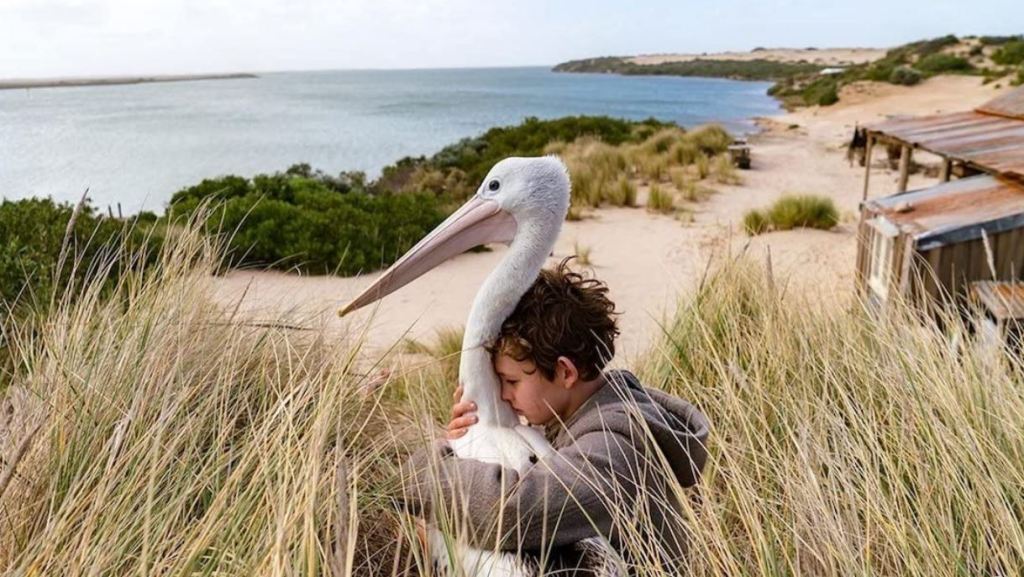
An old man returns to his home-town where he remembers his upbringing on a deserted beach with only his fisherman father, a lone wandering Aboriginal man, and a pelican, Mr Pervical for company. Encouraged by his granddaughter, he is drawn into the local environmental politics. This is the second film based on Colin Thiele’s beloved novel, and an extra episode, about the boy’s return to the beach of his childhood 50 years later, has been added to the original story of the lonely boy and his pet pelican. The result is satisfying and Geoffrey Rush’s portrayal of the old man is very good. But Finn Little is also very good as the small boy, and the retelling of the original story is also satisfying. The cinematography is impressive and Bruce Young captures the magnificent Coorong coastline. While some prefer the original 1976 Henri Safran classic film, the new retelling is also very entertaining and moving. (See here for more information)
50. Pawno (2016) (Paul Ireland)

A pawnbroker in the working class suburb of Footscray in Melbourne, sees a variety of characters come into his shop in one day, each with their own story. A highly enjoyable film about life at the low end of town in Melbourne’s western suburbs. The film revolves around the staff and customers in a grotty little pawn shop in Footscray, where people come in desperate for money, or looking for a bargain or just to chat and pass the time. Outside various characters hang around trying to generate a little interest or excitement to pass the time. There is a shy love interest between Danny, the young assistant in the pawn shop, and Kate, the smart chick from the bookshop down the road, which grounds the film while the other characters and their stories move in and out of view. A very good film from first-time director and writer. (See here for more information)
51. Yolngu Boy (2001) (Stephen Johnson)
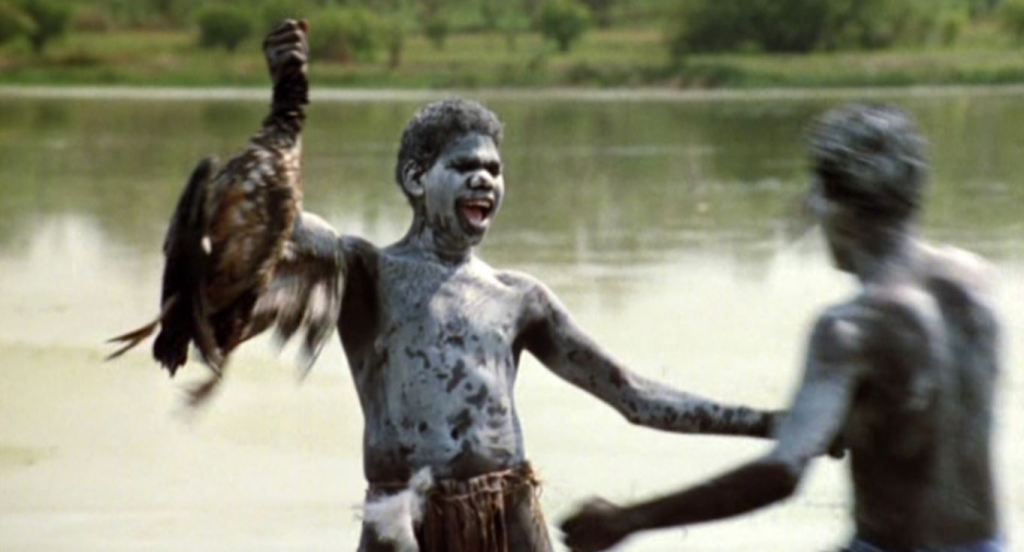
Three Yolngu (Aboriginal people of Arnhem Land) teenagers approach manhood and dream about their futures, but get into trouble and go bush together on a trip they will never forget. This is an engaging and surprising film about the camaraderie of three teenagers, Lorrpu, Botj and Milika, who are caught between their still-strong traditional culture, and the temptations of modern life. Botj, in particular, is a troubled adolescent from a broken home, and has already been in trouble with the law for stealing. The acting of the three inexperienced young actors is very natural and convincing, bringing us into their world of tradition and teenage hijinks. The film is full of Yolngu language, art, music and culture, which pervade the boys’ lives in a very natural way, along with pop music, girls and football. It’s an interesting story of friendship, and is notable for being one of very few films being made chiefly about Aboriginals up to that time. Stephen Johnson made the film with the cooperation and guidance of Yolngu people. (Johnson recently made his impressive second film, High Ground, set in the same area.) The film also includes some stunning photography of the people and landscape. (See here for more information)
52. Peaches (2004) (Craig Monahan)
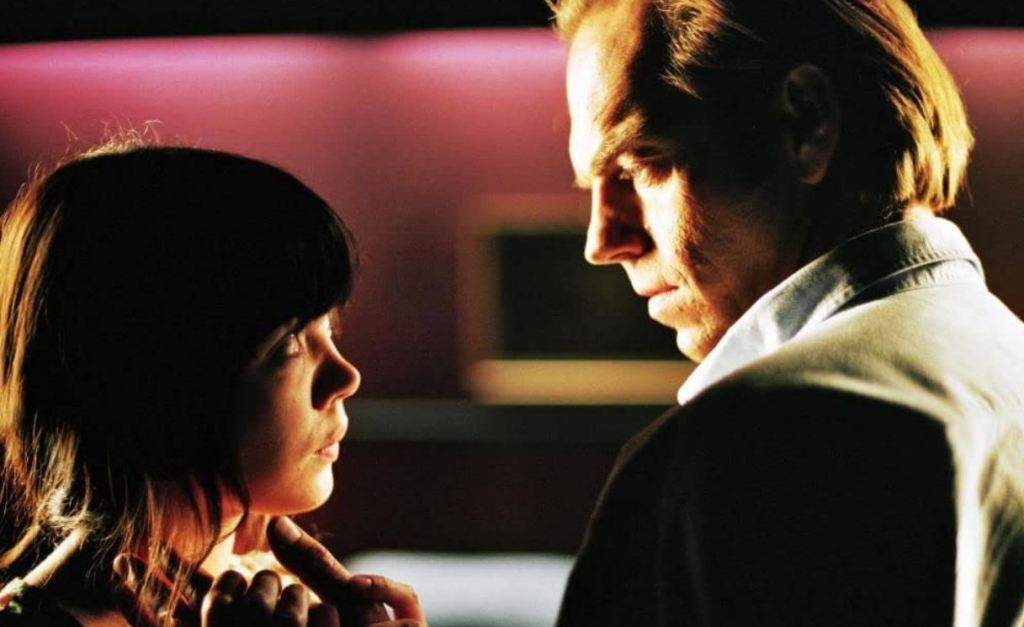
Stephanie is a young mixed-race woman, whose parents died when she was a baby, and who now searches for her identity and for love in her small town on the Murray River. Emma Lung plays the lost young woman, living in a town where everyone knew the parents that she did not; who was brought up by her mother’s best friend, Jude (Jacqueline McKenzie); and whose boss, Alan (Hugo Weaving), was once her parents’ and Jude’s close friend but is now an aging loner, and foreman of a factory heading for closure due to world prices. It’s a moving tale of various characters at a peach factory in South Australia’s Riverland. Memories of a happier times past with close friends contrast with current stresses, and Stephanie’s attempts to get close to Alan to find out the truth give rise to uncomfortable emotions. It’s bitter-sweet, evocative and well-acted. (See here for more information)
53. The Goddess Of 1967 (2000) (Clara Law)

A young Japanese man, obsessed with lizards and a 1967 Citroen ‘Goddess’ car, travels around outback Australia with a blind girl he meets wandering in the desert. This strange, atmospheric road movie is not for everyone, but if you can let yourself go with its long silences, and cryptic interactions, you may be pleased you met these two lost souls searching for their own peace. BG, the blind girl is the more lost of the two, being left alone in the middle of nowhere by the deaths of various relatives, but JM, the young Japanese man, seems to be a victim of his own obsessions. Beautifully filmed and mixing trauma with beauty in a journey of two wounded souls, the film is elevated by the performance of a young Rose Byrne as BG. The film divided the critics – some loved it, others hated it, both with a passion. (See here for more information)
54. Face to Face (2011) (Michael Rymer)

A boss, a foreman, and four workers, as well as various wives, friends and mothers gather together for a mediation meeting to discuss the events that led up to one of the workers assaulting the boss and foreman after he was dismissed. Secrets and resentments are aired which shed new light not only on the assaults but on problems that had festered in the workplace prior to the incidents. This is a gripping drama about workplace politics with issues of favouritism, unfairness, bullying, workplace pranks gone wrong, jealousy, ambition, nepotism, sexual liaisons, resentment, tax fraud, underpayment, staff morale and worker participation all canvassed. We see that those who at first appear the victims have also committed injustices that led to the incident and those who appeared most at fault have also suffered from injustices themselves. It’s an enthralling script from the prolific David Williamson, and director Rymer has made an engrossing film of great relevance to the lives of working people. All the actors, from the most to the least famous, do a fine job of making this a believable, entertaining and thought-provoking film. (See here for more information)
55. Celeste (2018) (Ben Hackworth)

In a rambling castle in Queensland’s rainforest, a reclusive opera singer, battling her memories and unnamed physical problems, is preparing for a rare concert in her gardens. When her enigmatic stepson suddenly returns, memories and feelings of a time before her husband’s tragic accident ten years earlier resurface for them both. This moody, beautifully photographed film, set mainly in a damp lush rainforest, is something of a mystery, with characters whose past traumas and thwarted desires are revealed only slowly through cryptic flashbacks and whose secret longings are uncovered throughout the film. It’s something of a challenge, but a rewarding one for viewers open to unravelling the hidden clues concealed amongst the dense tropical foliage, in the flashes of hazy memory, and the sparse dialogue and meaningful gazes of the main characters. Radha Mitchell carries the film as the apparently erratic, often drunk, singer, whose final comeback occurs in the shadow of a tragic secret. Thomas Cocquerel is also good as the stepson, whose sunny adolescence was suddenly fractured by his father’s accidental death in troubling circumstances, and who has obviously been scarred by the experience. Finally Nadine Garner plays Celeste’s live-in best friend Grace, who not only looks after Celeste and keeps their crumbling paradise together, but whose feelings for her friend may run even deeper. It’s an emotional trip into a fractured perfect family set in tropical Queensland’s brilliant lushness. (See here for more information)
56. Tom White (2004) (Alkinos Tsilimidos)

Tom White is a family man with a wife, two kids, a mortgage, and a job where he feels he is losing touch. After his boss suggests he take some time off, he goes on a binge, loses touch with his life, and then becomes homeless. The film is about his encounters with a number of other characters on the margins of society, whom he helps, and who help him. Colin Friels gives one of his best performances as Tom White, a man who could no longer cope with his regular life and left his loving wife and kids to become a homeless man. While homeless he meets a number of other lost people, and the film is largely about how they help each other cope with their individual problems. Often he manages to put his problems behind him and enjoy his time with these new friends, but in each case something goes wrong and he is on his own again. The film’s strength is in the humanity of all the characters, from the gay rent-boy, the woman trying to get off drugs who gets close to him, the old man who is a veteran of the streets, and the 12-year-old graffiti kid. The film’s only problem is its lack of resolution at the end, when the police reunite Tom with his family, but it seems he is not ready to go back yet. Somehow, after the journey Tom has been on, this feels unsatisfactory. Despite this, it’s a very memorable portrait of life for society’s strugglers. (See here for more information)
57. West of Sunshine (2017) (Jason Raftopoulos)

Jim has a vintage car, a big debt, a gambling habit, a broken marriage, a girlfriend running out of patience, a job he’s in danger of losing, his son to take care of for the day, and only a few hours to pay back the money he doesn’t have. This film is an interesting mix of gritty social realism and dreamy art film, with Jim, a working-class man trying to keep things together in Melbourne’s west, while trying to keep his son happy. The film is something of a suburban road-trip, as Jim combines his courier job with a desperate search for cash to pay his debt. The film has a lot to say about contemporary life in Australia’s cities, as well as the difficulty of maintaining father-son relationships when your life’s a bit out of control. Though Jim’s choices may have you gritting your teeth at times, his humanity is very appealing. (See here for more information)
58. The Turning (2013) (17 Directors)

Tim Winton’s book The Turning, forms the basis for this film of 17 connected short films by 17 directors, all set in coastal areas of WA and Perth, and about a variety of characters struggling to change, or ‘turn’ their lives around . Winton’s characters are imperfect but real, dealing with some failure in their lives, struggling to build or maintain their relationships, or placed in situations of loss or tragedy. The stories are mostly not related to each other, though a few follow the same characters at different times of their lives. As a 3-hour epic, the film is inevitably uneven, as some stories are better than others, but it is an interesting illustration of the variety of Australian life, and worth seeing for the array of our best actors who took part. Rose Byrne won the AACTA best actress award for her part in this film. (See here for more information)
59. Four of a Kind (2008) (Fiona Cochrane)

This film tells four stories involving four women and three murders which reveal interlocking connections and uncover secrets, deceptions and betrayals. This is an intriguingly complex series of related stories involving four women seeking to hide their own secrets and reveal the secrets of the others. Based on a play, Disclosure, by Helen Collins, the film starts with Detective Inspector Gina Sturrock (Leverne McDonnell), interviewing a surgeon’s wife, Anne Carson (Louise Siversen) in relation to the murder of her husband’s mistress. But later, the inspector is telling her counsellor about a violent event in her own past, and then the counsellor has to deal with shocking events in her own private life. People lie, and change their stories; they omit important things, and sometimes admit things to others they feared admitting to themselves. It’s a fascinating study of trust and betrayal, guilt and innocence, shame and deception, loyalty and infidelity. All the performances are excellent and the story has surprises right to the end. (See here for more information)
60. Breath (2017) (Simon Baker)
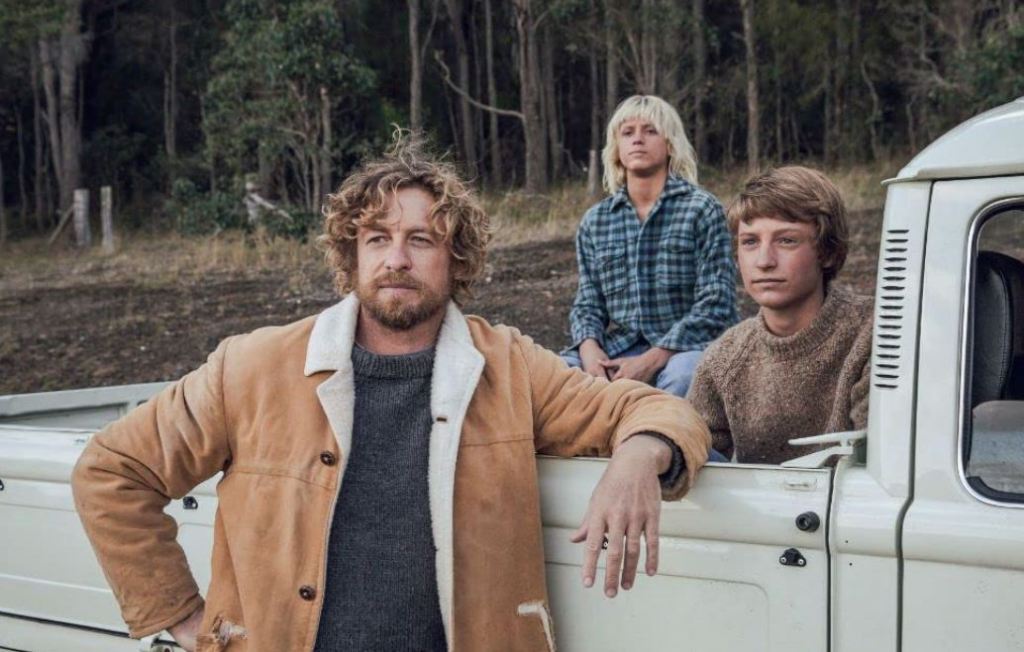
Two teenage boys in a tiny town befriend an experienced surfer who helps them overcome their fears, but exposes them to increasingly risky situations. Tim Winton’s much-loved books are notoriously hard to turn into films, as they probe the Aussie male psyche and are full of tight-lipped, working-class blokes beaten down by the hardness of an unforgiving country. Such types don’t usually make for entertaining film subjects (unless they are blowing away villains, Dirty Harry-style, which never happens in Winton’s stories). But director/actor Simon Baker does a pretty good job catching the friendships, joys and fears of teenage life in a poor little timber town where surfing is about all there is to do. This is not a bright, sunny California or Byron Bay type of surf film though, as the Southern Ocean below Western Australia is dark and wild, and often threatens to crush the unwary surfer on the rocks or drag him down to the depths. The boys learn how to live through the challenges of surfing, but also find it difficult to cope with life away from the surf. The young hero Pikelet finds himself caught in two triangles, with the male competitive triangle of his adventurous mate, Loonie, and the surfing veteran Sando; and another more confusing sexually-charged triangle with Sando and Sando’s woman Eva. There’s a lot to think about, even if Winton’s males are a closed bunch. (See here for more information)
* * *
Notes on Methodology:
- This list was compiled by considering three sources: 1) my personal opinion, 2) the weight of critical opinion (a soon-to-be-published updated version of this page), and 3) your combined opinions, as represented by your ratings and votes at IMDb, all sorted by an algorithm of great sophistication and mystery.
- Many dramas overlap with other genres, such as Action, Comedy, Thriller, Crime etc. In these cases I have had to make the difficult call as to whether to include a film on this page, or on the page for Top Action films (upcoming), Top Crime and Thriller (upcoming) or Top Comedy (complete – I discussing the overlap issue in the Notes section there). Thus some excellent dramas (such as Dead Calm, Mystery Road, The Hunter etc) will appear on other pages.
- Because so many contemporary dramas have been released since 2000, many very good films have missed my cut. If you have any opinions on this topic, I’d be keen to hear from you.
This is the fourth in my series about the best Australian drama films – the previous pages were The Top 40 Australian Period Films – ranked, The Top 22 Australian Contemporary Drama Films of the 1970s & 1980s – Ranked and The Top 32 Australian Contemporary Drama Films of the 1990s – Ranked.
I have seen and recommend all of these films, and I encourage everyone to leave comments with your thoughts on these and any other Australian films.
2 Comments Add yours